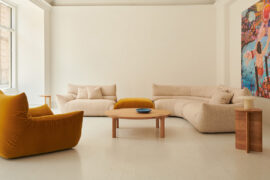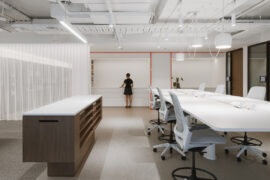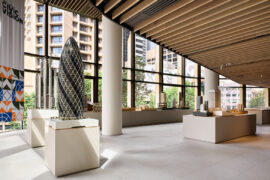Want an insight into how tomorrow’s Singapore-based product designers might improve our lives? Check out the work of the 2017 graduates from the NUS Division of Industrial Design.

Adept & Responsive Combat (ARC) by Alex Teo
June 6th, 2017
The design student’s graduation project has the potential to be the most important thing in their portfolio for the entirety of their career. It’s the young designer’s opportunity to explore and state what design means to them, and to set up lines of investigation that just might stay with them throughout their professional life.
And as the 2017 graduating students of the National University of Singapore’s (NUS’s) Division of Industrial Design (DID) wrote on the Facebook page for their grad show’s opening night, the graduation project is about “investigating the role of design in our world today and in the future.”
The projects they are presenting at the National Design Centre from 2 to 8 June represent a varied role for design, delving into a wide spectrum of design domains in four main categories: Experimental, Social Impact, Lifestyle, and Health.
In the Health category, Alex Teo showcases Adept & Responsive Combat (ARC) – headgear that surpasses the performance of conventional padding materials (that only absorb or dissipate impact energy) by redirecting impact forces with a responsive mechanical metamaterial. A metamaterial is a synthetic composite material with a structure that is engineered to have properties that aren’t found naturally.
ARC can protect its wearer against two types of concussive forces. It’s already been lab tested to protect up to 2.77 times better against linear impacts and 2.52 times better against rotational impacts than conventional headgear designs. ARC was smartly designed with four pieces and ergonomically placed straps that allow for an adaptable fit.
In the Lifestyle category, Yuen Hin Nam presents Ametri – a folding bicycle designed specifically with Singapore commutes in mind. When folded, the dimensions of Ametri are within the requirements stipulated by the Land Transport Authority for carriage on public transport. The bike was designed for easy folding and rolling with a caster wheel that enables omnidirectional manoeuvrability.
Low Joo Tat designed for Social Impact with Last Cradle – a set of tools (not pictured) to help the funeral profession humanise the transportation of the deceased. The idea was to transform the current clinical procedure into a warm and aesthetic ritual that is more meaningful for both the bereaved family and the funeral staff. Last Cradle consists of a carrier that allows gentler and easier lifting, and a mortuary stretcher cover that envelopes and secures the deceased in a cocoon-like vessel.
Experimental Design was the focus of Edmund Zhang, who designed Squeezy Peasy. He explored the “basic joy” of squeezing as an alternative way of interacting with everyday objects. The aim was to create “happy hybrids” – objects that straddle function and delight. Thus, a table lamp becomes brighter and a portable speaker becomes louder when squeezed.
Other projects include Bead by Bit by Audrey Chua, a new method of producing beading canvases for Peranakan beadwork by leveraging on 3D printing and algorithmic design software; REGAIN® by Anthony Yu, a knee brace that addresses the risk of intercondylar fractures among sufferers of ACL damage with shinbone stabilisation; Folks by Kevin Chiam, a series of kitchen tools for the visually impaired that incorporates sensory feedback and tactile cues; and a mobile phone interface for baby boomers by Lim Xin Yuan that addresses the issues of readability, the small size of some interfaces, and confusing multi-step interactions.
INDESIGN is on instagram
Follow @indesignlive
A searchable and comprehensive guide for specifying leading products and their suppliers
Keep up to date with the latest and greatest from our industry BFF's!

Welcomed to the Australian design scene in 2024, Kokuyo is set to redefine collaboration, bringing its unique blend of colour and function to individuals and corporations, designed to be used Any Way!

A curated exhibition in Frederiksstaden captures the spirit of Australian design

London-based design duo Raw Edges have joined forces with Established & Sons and Tongue & Groove to introduce Wall to Wall – a hand-stained, “living collection” that transforms parquet flooring into a canvas of colour, pattern, and possibility.

Carr’s largest residential project to date integrates concrete, steel mesh and landscape across 122 apartments in Melbourne’s Brunswick.

GEYER VALMONT is launching an innovation hub designed to improve existing interior design capability through enhanced ways of working and industry-leading technology products.
The internet never sleeps! Here's the stuff you might have missed

David Gole, principal at leading climate-resilient design practice JDA Co., comments on the intersection between heritage and climate in architecture.

Civic Vision, a major exhibition showcasing the global work of Foster + Partners, has officially opened in Sydney.